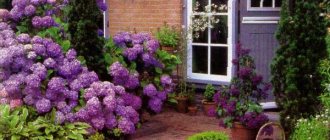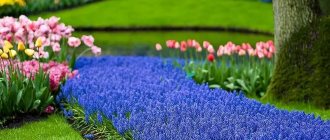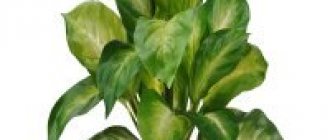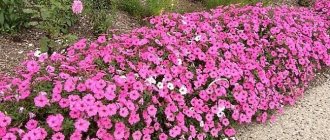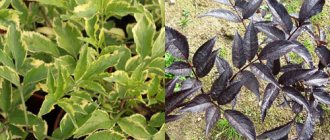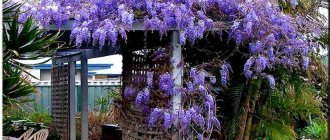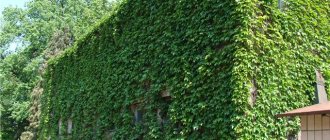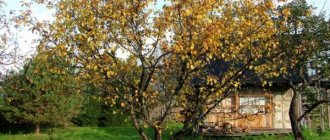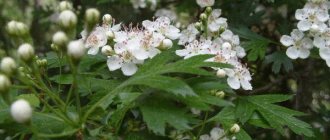Ornamental grasses in landscape design
Huge selection of flower seeds on sale! Come visit, order in the online store! Delivery throughout Russia.
It is difficult to imagine a modern garden without ornamental grasses. The use of cereals in landscape design was not so long ago an innovation, something incredibly original. But their unpretentiousness and low maintenance requirements have made cereal plants a favorite in garden design.
Cereals or grasses are a family of plants that include wheat and bamboo, reeds and all kinds of grasses. Almost all of these plants are perennial, distributed over all continents, and widely used in culture.
Grass lawns have long been considered an indispensable attribute of a cultivated landscape. They have found their application in gardens of any style. In the 1930s of the last century, cereals were first introduced by breeder and writer Karl Forster as plants for creating artistic compositions. His ideas were further developed in the works of many landscape designers, but they became especially popular in European countries in the 70s. The impetus for this widespread interest was special mixtures for urban landscaping, including drought-resistant perennials and grasses.
Nowadays, cereal plants have become full participants in flower beds, mixborders and other various corners of the garden. They have a number of qualities for which they are valued:
- Constant decoration.
- Variety of types, sizes, shapes and colors.
- Low maintenance requirements.
- Ability to easily get along with other plant species.
How to choose plants
About 1,000 species of various cereals grow in Russia, more than 200 of them are highly decorative and are widely used in landscape design. How to navigate this diversity and what to consider when choosing?
- Climatic conditions.
Grasses that will not freeze in the Russian winter include molinia, miscanthus, reed grass, turfgrass, fescue, grate, phalaris, and ryegrass. In the southern regions, more heat-loving cereals can be sown - pampas grass, ornamental millet.
Miscanthus chinensis. The contrast of upward-pointing inflorescences and arching leaves makes it especially beautiful
- The location of the cereal corner in the garden.
If it is in the shade or on the north side of the house, you need shade-tolerant forest-type grasses - various varieties of reed grass, blue molinia, oak grass.
In the sun, steppe and alpine grasses will feel great - gray fescue, grass grass, feather grass, maned barley, imperata cylindrical.
Sedge, cattail, turf pike, reed falaris, and miscanthus will take root on the shore of the reservoir.
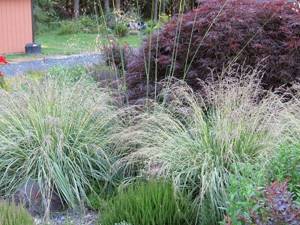
The openwork zipper creates a transparent veil, especially spectacular in the rays of the setting sun.
- Decorative features.
When choosing, take into account the height and habit of the bush, the speed of its growth, the shape of the inflorescences, and the period of the highest decorativeness.
So, if you need low grasses for an alpine hill or to decorate a border, gray fescue, bulbous ryegrass, and blue keleria are suitable.
Cortaderia and miscanthus are used to create accents and solitaire plantings.
If you plan not to cut flower stalks for the winter, you need ones that will not break under the first gusts of winter wind. Various varieties of miscanthus, reed grass (Karl Foerster variety), spreading rush, and reed will cope with this task perfectly.
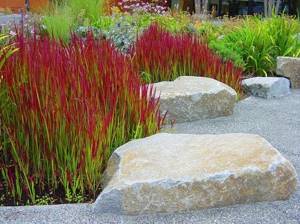
Thanks to the red foliage of Imperata cylindrical, it is suitable for creating accents in the composition.
Decorative properties
Cereals are attractive at any time of the year: in the spring they delight with carpets of bright fresh greenery, in the summer they surprise with intricate panicles of inflorescences, in the fall they change their color and saturate the garden with autumn colors, and even in winter many of them retain an attractive appearance, fancifully covered with snow or overgrown with frost. The variability of grass plants provides year-round interest in the garden.
After cutting, many species retain their shape and color and are indispensable when decorating dry bouquets and floral arrangements.
Cortaderia
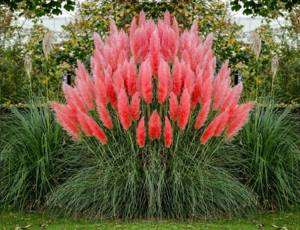
This plant is also called “pampas grass.” Its beauty is fully revealed in autumn, when large paniculate fluffy inflorescences, similar to feathers, are formed. There are different varieties of cortaderia: with white, pink and cream shades. The culture is hardy and tolerates drought well. In general, it loves warmth and light; it is harmed by excess humidity. Looks great near stones, in separate plantings, or in the background of a flower garden.
Variety of colors and textures
Representatives of the cereal family are varied in color - green, bluish-green, yellow, yellow-green, red, purple, variegated. In a mixborder, the red leaves of Imperata cylindrical can be shaded with silver-green Chinese miscanthus, and blue fescue can be combined with reed grass.
The height of different types of cereal plants is varied - from 20 cm for fescue to 2 m for miscanthus; suitable cereals can be selected for almost any corner of the garden.
Spikelets and panicles of inflorescences appear from June to September, depending on the species, transforming the plant. Dense green cylinders and white panicles, purple-brown tassels and pink fluff usually last until late autumn and can be used for dried bouquets.
Variety of cereal plants
All ornamental grasses and grasses in landscape design are divided into annuals and perennials.
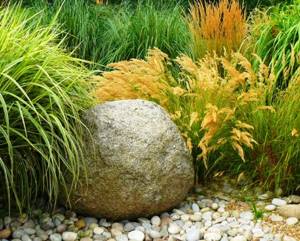
If the first type of plants has to be replaced after a year, then the perennial grasses for the garden will retain their attractive appearance even after the end of the cold season and the next year will look as expressive as before.
Cereals can differ not only in the duration of growth, but also in height, resistance to temperature changes, light-loving properties and other characteristics. Please note that most of them do not have a rich color scheme and attract attention due to the shape of the leaves.
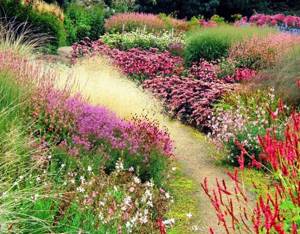
To create an exquisite garden or plant corner in your summer cottage, you can study photos and names of cereals in the garden, but it will be better if you immediately decide how to combine plants of different heights in one area to create a harmonious composition.
All decorative cereals for the garden are divided into three types depending on their parameters:
- low-growing cereals can grow up to 15-40 centimeters. They are often used for border decoration, as well as to create the outer boundaries of paths and roads in the garden. But you can use cereals of small height for individual flower beds, as well as rock gardens, rockeries and other decorative areas where a combination of different plant varieties is allowed;
- cereals of medium height can reach sizes from 40 to 90 centimeters. They attract attention to plant and flower zones formed from several tiers. This group can also be used to create separate “islands” of cereals in a garden plot or planted in mixborders so that the ears and panicles give the effect of continuous flowering in these zones;
- tall varieties exceed 90 centimeters in height. They are used to create background compositions in flower beds consisting of several levels of plants. Also, with the help of tall grasses, you can create unique living screens to protect flower beds from strangers.
Despite their different appearance, cereal plants of any group can be useful when decorating gardens at dachas, so we will tell you about each category and offer several varieties that can be used to transform your landscape design.
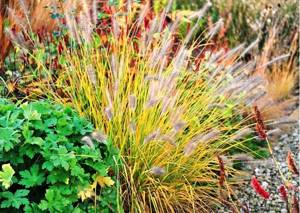
Easy to grow
One of the key trends in modern landscape design is ease of maintenance. The main task of a landscape designer is to correctly select and plant perennials, and further care for them is kept to a minimum. Plants grow, filling the free space, bloom at the time assigned to them by nature, remaining attractive all the time.
Cereal plants are ideal for solving this problem. They tolerate drought and heavy rains well and do not require pruning or frost protection. Ornamental grasses have a good growth rate and are easy to grow, less susceptible to disease and pest infestation.
Soddy meadow and blue molinia grow well in moist soils, reed phalaris feels great under the scorching sun. Cereals can grow on both poor sandy and rocky soils and on fertile black soil.
Feather grass is beautiful
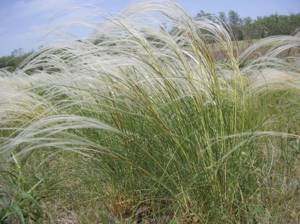
The cereal is loved by many gardeners for its fluffy large spikelets. Feather grass is an unpretentious, slow-growing plant. It is perennial, will grow in one place for a long time and decorate your site. Its flower stalks sway very beautifully in the wind. Suitable neighbors for feather grass: chamomile, poppy and sage. The plant loves sun and warmth, is resistant to any weather conditions, and tolerates both frost and drought. Prefers dry soil with good drainage.
Combinations of cereals with other types
Many cereals are very aggressive, grow quickly and occupy large areas if they are not artificially limited in growth. But their ability to adapt to different conditions allows them to be combined with other garden plants.
The cereals in the background of the mixborder serve as an ideal background for flowers; the narrow long leaves and spikelets of cereals combine perfectly with decorative foliage plants.
Daylilies, crocosmias and alliums are created by nature itself for a flower bed of cereal plants; tall irises look great with herbs. Drought-resistant kermek and sun-loving agapanthus go well with bulbous ryegrass.
Phalaris and fescue are ideal for alpine slides and gravel gardens.
Caring for ornamental grasses
In the spring, as soon as the snow melts, it is necessary to remove last year's remnants of grass, thereby accelerating the start of new greenery. Otherwise, caring for cereals is the same as for other garden plants - timely weeding, loosening, watering if necessary.
To inhibit the germination of weeds and preserve the soil structure, we recommend mulching the plantings with decorative crushed stone or pebbles.
In the second or third year, plants can be fed with complex fertilizers at the rate of 30–40 g/m². They are dissolved in water or embedded in the soil in the root zone.
In autumn, brittle flowering stems are cut off so as not to spoil the winter landscape, but strong and decorative stems are left until spring.
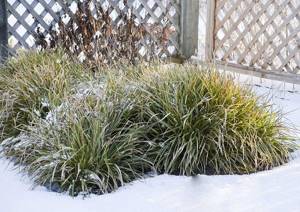
Mountain sedge bushes under the snow
Types of ornamental grasses for the garden
Grains for the garden are chosen based on the idea of landscape design, lighting and soil characteristics. The height of the plant is essential.
Low-growing varieties of cereals
Species with a height of no more than 40 cm are classified as low-growing. They are most often used in the design of rocky hills, rockeries and rock gardens, as borders, and planted in the foreground of mixborders.
Meadow foxtail (Alopecurus pratensis) is a perennial plant with golden foliage, heights up to 30 cm, flowering begins in mid-summer, inflorescences in the form of silky spikelets. A compact bush that does not spread and does not suppress nearby crops.
Gray fescue (Festuca cinerea) is a small bush up to 20 cm in height. An excellent cereal crop for landscape design, used for rocky hills and mini-beds. The plant has needle-shaped blue leaves and blooms with soft reddish panicles. Prefers sunny places.
Bulbous ryegrass (Arrhenatherum bulbosum) is a perennial grass with foliage height up to 30 cm, compact, does not spread, narrow foliage of white-green color.
Meadowweed (Deschampsia flexuosa) is a very slow-growing plant but has striking foliage with thin, hair-like leaves that are bright yellow. It is most beautiful at the beginning of summer, blooms in July, with light inflorescences on high peduncles.
Blue Keleria (Koeleria glauca) is a representative of perennial grasses, up to 10 cm high, forms a tussock with bluish-green hard leaves, looks beautiful on rocky hills and rockeries, tolerates cold winters well, but needs additional drainage.
Maned barley
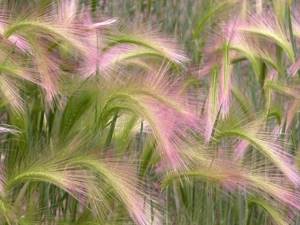
A popular cereal of alpine hills and flower beds. It is loved by many for its decorativeness and unpretentiousness in cultivation. The leaves are bright green, but the spikelets give the plant a special charm. They have a protruding, curvy shape. The stubble often comes in different shades, ranging from yellow to light purple. Maned barley blooms from July to August, and when dry it is also very decorative.
Medium-sized varieties of cereals
Cereals reaching a height of 40-90 cm are classified as medium-sized plants. Such cereals look ideal in the design of multi-tiered flower beds, as well as for mixed borders.
Feather grass (Stipa capillata) reaches a height of 30-80 cm. The grass prefers an open sunny place and soil without stagnant moisture, and is much more tolerant of drought. Its bluish-green leaves and white inflorescences are especially beautiful when planted in a clump.
Foxtail pennisetum (Pennisetum alopecuroides) is the most cold-resistant of the pennisetums; it can winter even in the middle zone under cover of leaves or spruce branches. It blooms in August – September, the flower stalks are fluffy white or pink in the form of panicles.
Muhlenbergia capillaris - blooms in August - September, surprising with the pink or white fluff of its inflorescences. A herbal bush with long, needle-shaped leaves turns into a pink cloud. A wonderful decoration for the autumn garden.
Phalaris canariensis or canary grass is an annual cereal crop, its height is 50-90 cm, has narrow striped leaves and cone-shaped inflorescences, ideal for decorating ponds, and is also irreplaceable in mixborders, where it can become the main accent. Sowing is done in open ground in a sunny place, in April or May.
Muhlenbergia hairy
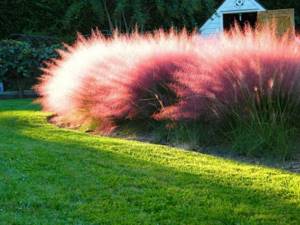
This culture is quite tall and from a distance resembles a pinkish haze. Purple inflorescences are panicles, the length of which reaches 50 cm. They appear by the end of summer, if all growing conditions are met.
Muhlenbergia hairy is light-loving but shade-tolerant, it is drought-resistant and can grow in almost any soil without the need for fertilizer. Gardeners love to plant Muhlenbergia along borders or next to perennials. However, for it to give the best effect, it should be planted en masse.
Tall varieties of cereals
Cereals, the height of which is one meter or more, are classified as tall species; such cereals are used both in multi-level compositions as a background and to create flower screens. Tall grasses are used a little less frequently in landscape design than low-growing and medium-growing varieties.
Acute-flowered reed grass (Calamagrostis acutiflora) is a perennial grass with a creeping rhizome, forming a turf, 150 cm and above in height, grows very quickly, is unpretentious, easily tolerates drought, grows both in the sun and in partial shade. Unlike many other cereals, it thrives on heavy clay soils.
Pennisetum glaucum or pearl millet is an annual herbaceous plant whose leaves and ears have a pleasant bronze-burgundy hue. The plant is up to 1.5 meters high, used both in group compositions and as separately growing bushes.
High pearl barley (Melica altissima) is a fairly tall plant, reaching a height of 1.5 meters. The inflorescences have a purple tint. This grass is well suited for landscape design and looks ideal in flower beds with yellow or orange flowers, acting as a background for them. Can grow in damp and shaded places, on any soil.
Sugar-flowered Miscanthus is an unpretentious species that forms a tall, approximately human-sized, mound-shaped tussock. It blooms very impressively in late summer and early autumn.
Phalaris (two-source) reed reaches 1.5 m in height, is resistant to rain and wind, and is extremely unpretentious. It has strong creeping rhizomes and is able to grow in infertile dry soil, but prefers moist soil. Feels good in the sun and partial shade.
Decorative grasses can decorate any area with their presence and implement any landscape design ideas.
Plant varieties
Cereal plants differ from each other, but they can be easily combined. The main condition for choosing neighbors is that they should feel good on the same type of soil with identical humidity. A review of the most popular ornamental grasses with names and photos will help you decide on a specific type of plant.
Blue fescue
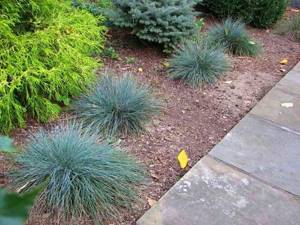
Its peculiarity lies in its unusual silver color, which will harmonize well with a sand base, pebbles or large cobblestones in the garden. Fescue is considered a heat-loving plant, so it begins to be planted in the ground in June, when the soil has completely warmed up. There are several more rules that should be followed so that the bushes grow bright and neat:
- the soil should drain well, moisture stagnation should not be allowed (soil with a high sand content is best);
- every 4 years the bushes must be divided;
- It is recommended to replant the plant every 2 years, otherwise the leaves may become pale.
Fescue is one of the lawn plants. It is grown to decorate flower beds, paths, and gazebos. It is especially useful in areas with insufficiently fertile soil, which is not suitable for other plant varieties.
Pogonaterum millet
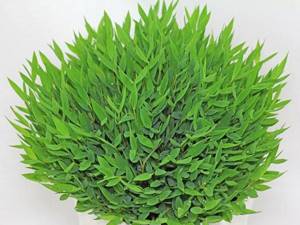
Among all the ornamental grasses and grasses in landscape design, millet pogonaterum is the most unusual. Its second name is indoor bamboo, since the two plants are related. The stems of an adult plant resemble real bamboo thickets in miniature. The leaves are bright and can have different shades of green.
Pogonaterum is a perennial cereal plant, but it is recommended to grow it at home in a warm place. The air temperature for this variety of cereals should not fall below 18 degrees. Frosts will lead to its death, but in summer the pot with the plant can be taken outside.
Indoor bamboo is not a very easy plant to care for; the owner will have to fulfill several basic requirements:
- the area should be well lit, pogonaterum is not afraid of even direct sunlight;
- watering is carried out regularly even in winter; the upper part of the soil should not dry out;
- It is also recommended to spray the green mass with a spray bottle.
Unlike many other ornamental grasses and grains for the garden, indoor bamboo requires constant feeding. This can be a regular mineral fertilizer for indoor plants, which is added twice a month to the water for irrigation. The soil for growing pogonaterum will also be different. Since the plant does not tolerate drying out, the soil should contain a large percentage of clay. It is recommended to add peat, humus or other mineral fertilizers to the seedling mixture.
Maned barley
Maned barley is another cereal plant that is often used in landscaping. Outwardly, it resembles ordinary barley and retains all the positive characteristics of this variety. The plant tolerates frost well, so it can be safely planted in flower beds where heat-loving varieties have not taken root.
Barley is one of those varieties that grow quickly and invade new areas. Periodically, the bushes need to be thinned out so that the flowerbed looks neat. In a temperate climate, the plant can remain outside for the winter, but if frosts occur, it is better to dig it up and move it to a house or greenhouse.
Regular thinning of bushes or limiting growing space is not enough. Barley reproduces well by seeds, so they must be cut before they are fully ripe.
Cortaderia
Cortaderia is a perennial cereal plant that can reach up to 3 m in height. It should not be combined with other, smaller varieties, since it forms a strong root system and uses all the nutrients from the soil. In addition, it is worth thinking in advance how the cortaderia will fit into the overall composition - if you plant it once, it will not be easy to get rid of it.
The leaves of this plant are strong and flexible. At the end of summer and beginning of autumn, panicles up to 50 cm long form on them. Individual inflorescences have smooth long fibers and are colored cream, white or beige. The panicles are higher than human height and resemble clouds.
Cortaderia is a cereal plant that does not dictate any conditions for care. It grows beautifully in abandoned areas, capturing new territories every year. It is also protected from pests, direct sunlight, drought and flooding. At home, it can be watered every 2 weeks, and adult plants need this procedure even less often.
What you need to know about ornamental grasses
Cereals are an excellent solution both for decorating unfertilized, “poor” areas of land, and for creating flower beds - real masterpieces of garden design.
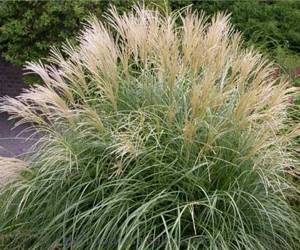
Cereals are simple plants at first glance that no one pays attention to. But as soon as you place them in a flowerbed next to other plants, they will immediately give your flowerbed a sophisticated look
The most striking representatives of this type of plant: molinia, reed grass, sedge, millet, sesleria and others. Cereals are planted anywhere in the garden (along paths, in flower beds, near ponds). They add a natural touch to the surrounding area without requiring fertilizer or special care.
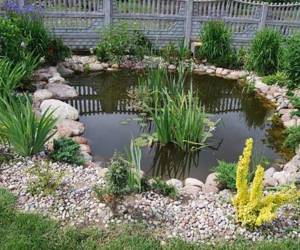
Cereals are perfect for landscaping an artificial pond. So, if you have one on your site, feel free to plant molinia or reed grass
Cereals in garden design are mainly perennials, although there are also annuals. What to choose? Experienced gardeners find it inconvenient to spend a huge amount of time arranging a cereal garden from annual species, and then redo everything all over again in the spring. Therefore, experts recommend using perennial varieties or compositions of forbs.
